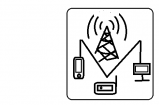The Proper Way of Installing Kali Linux in Parallels // Beginner Tutorial
This tutorial will show you how to set up a Kali Linux virtual machine (VM) in Parallels Desktop.
👉🏻 Questions? Hit this link to get your questions answered ➡️ https://tinyurl.com/mr3a9rz4
🔥 NMAP Basics Tutorial for Kali Linux Beginners ➡️ https://youtu.be/W7076RPIgfQ
Using the Parallels Toolbox, not only you can run Kali in a virtual machine (VM) but it also provides isolation from the host, enables you to communicate with other VMs and the host and other computers on the network, and lets you restore from previous versions of the system using Time Machine.
The fact that Parallels for Mac is always being improved by new releases is its finest feature. There are now 18 versions of Parallels for Mac, the most recent being 2021’s Parallels Desktop 18.
The best part is that it’s not necessary to have a Kali Linux disc image or installation image in order to utilize the Parallels Desktop for Mac; you may use an existing virtual machine that is already part of the system.
Kali Linux is a free and open-source Linux distribution based on Debian that was designed for use in a variety of information security-related fields including Penetration Testing, Security Research, Computer Forensics and Reverse Engineering.
CHAPTERS:
01:00 – Parallels Overview
04:30 – Install Kali Linux
06:36 – Change Hostname
10:06 – Create a Sudo User
12:05 – Outro
🤓 Follow Us:
https://www.tiktok.com/@danduran.me
https://www.instagram.com/danduran.me/
https://www.linkedin.com/in/danduran-ca/
https://www.facebook.com/danduran.me
Tweets by DanDuran
https://DanDuran.me
Views : 117
linux




